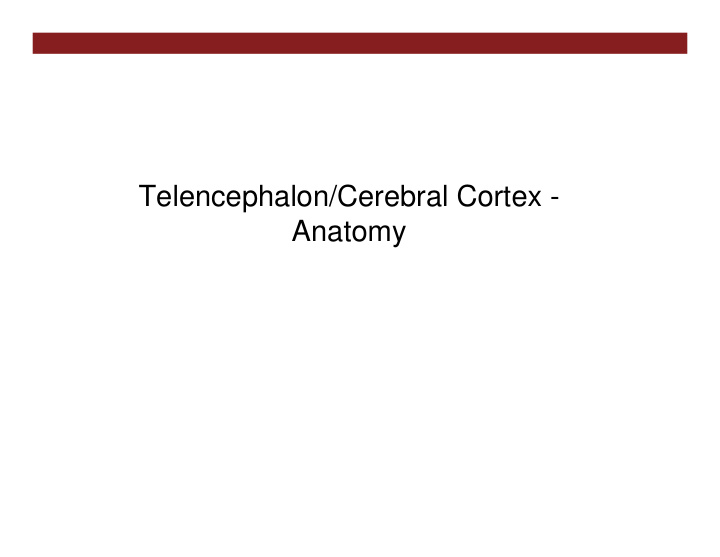



Telencephalon/Cerebral Cortex - Anatomy Cerebral Cortex
Box 26D Brain Size and Intelligence
1.12 Gross anatomy of the forebrain. (Part 3)
Haines, Fund. Neuro., Fig 16 ‐ 10
Figure A21 The ventricular system of the human brain (Part 1)
Box A A More Detailed Look at Cortical Lamination
Forebrain of Human Neocortex Archicortex (Hippocampus) Paleocortex
Figure 26.3 Canonical neocortical circuitry
Rat Neocortex 10X4
Betz cell Primary motor cortex
Methods to study cellular elements of the cortex
Cellular organization of the cortex Pyramidal (glutaminergic) cells and interneurons (GABAergic) cells Adapted from Kwan et al, 2012 from Jones, 1986
Lewis et al., 2005, Nature Rev. CORTICAL INHIBITORY NEURONS and Schizophrenia .
Figure 26.2 The structure of the human neocortex (Part 2)
Fiber systems
Main association bundles lateral view medial view Haines Fund. Neuro. Fig 16 ‐ 13
Subdivisions of Dorsal Thalamus After Snell 2001 Fig. 12-3
Inputs and Outputs of Dorsal Thalamus After Snell 2001 Fig. 1
Figure 27.1 The major language areas of the brain
Homunculus in Motor and Sensory Cortex
Primary somatosensory areas: 3,2,1 Primary Motor areas: area 4 Specific sensory: Visual 17, 18, 19 Auditory 41,42 Association cortex; Limbic: cingulate, posterior orbital cortex
Forebrain of Human Neocortex Archicortex (Hippocampus) Paleocortex
Amygdala Figure 15.1 Organization of the human olfactory system Pyriform Orbitofrontal
CA4 ML SG slm RaD Hippocampus -Archicortex SP OR CA3 Py
Figure 29.3 Elements of the so-called limbic lobe
Figure 8.6 The rodent hippocampus
Figure 29.4 Modern conception of the limbic system (Part 1)
Figure 29.4 Modern conception of the limbic system (Part 2)
Figure A14 Internal structures of the brain seen in coronal section
Figure 27.3 Confirmation of hemispheric specialization for language
Figure 26.6 Neuroanatomy of neglect syndromes (Part 2)
Figure 26.5 Visuospatial tasks performed by individuals with contralateral neglect syndrome
• Anosognosia- does not recognize defect • Sterognosia, Asterognosia, Agnosia- cannot recognize objects (touch) • Apraxia-cannot perform a motor task (salute for example) • Aphasia- speech (motor, sensory)
Recommend
More recommend